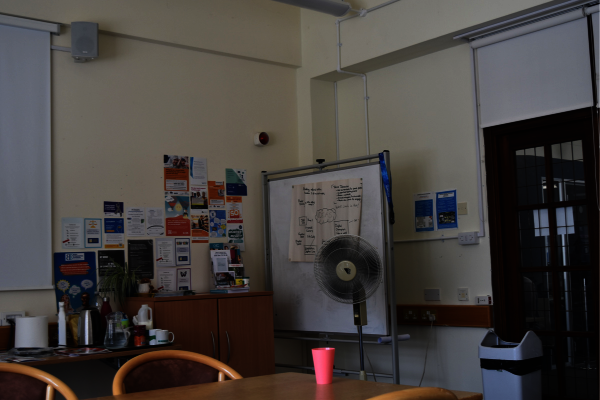Simon's Voice - Shielding during COVID-19

Simon, who is a train driver, fell into the government's shielding category at the start of the COVID-19 lockdown leading to his organisation putting him onto the furlough scheme.
At the beginning of lockdown Simon was celebrating his 20th anniversary at his place of work. He’s been driving trains on one of the UK’s biggest networks for the past two decades and now has one eye on retirement.
When the COVID-19 pandemic hit, the 55-year-old from North London was told to shield for three months. His immune system is weakened due to medication he takes for a health condition, meaning he was classed as more vulnerable to the disease. He was no longer able to work or go outside, relying on food parcels, his wife and the local community to supply him with all the essentials he needed.
He recalls feeling very daunted at first. “When I was told to shield, I instantly worried that this was going to force me into early retirement. Physically and mentally I still felt fit as a fiddle, and this was a massive shock to the system as my entire life was brought to a halt.”
His work granted him sick leave and once the furlough scheme was announced he was put onto it, like many others shielding within his organisation. “At first I thought we would have to solely rely on my wife and tap into my retirement savings in order to get by, but I’ve been very fortunate not to have that issue,” he says.
The crisis has presented some positives for Simon. It’s freed up a lot of his time, which he’s used to plan for his retirement. “This crisis has given me the chance to look at what I’ve saved, what I want to do with it and what my retirement might look like – I’m never going to be prancing around the south of France with champagne in my hand, but I want to be comfortable,” he says.
Why keep someone in employment and pay them when they have to constantly shield? So, yes, I am worried about what a second wave might bring.
However, there has been an emotional cost to the crisis - not being able to physically see his four children. They all live in different parts of the country and he hasn’t seen them since the end of February. “I’ve missed two of my kids’ birthdays, which was really, really tough,” he says. “Even with video calling, it’s not the same as I just wanted to be with them and give them a hug. That was a real kicker, and I can’t wait to see them.”
With the easing of lockdown, and the government announcing more measures to bring society back to some form of normality, those shielding can stop doing so from August 1. Simon has mixed feelings about this. “I’m more than happy to start going back outside, but with social distancing rules changing and people still dying from this virus, I am worried that the chances of catching it have increased.”
Like many in his position, Simon feels his chances of staying in employment for longer have diminished due to his age and the fact he’s vulnerable to the virus. His work have asked him to come back to work from August 2. “Luckily, at work I’m confined to my own box at the front of the train, and I rarely come into close contact with people anyway. I’m confident that work will make it as safe as possible,” he says. “But I’m worried about my financial situation if I do have to shield again. I feel like I’m more likely to lose my job because I would be a risk to my employers, Why keep someone in employment and pay them when they have to constantly shield? So, yes, I am worried about what a second wave might bring.”
At the Centre for Ageing Better, our goal is to see older workers in employment for longer, with conditions to allow them to work comfortably. The COVID-19 crisis has changed the way we work forever, and we want to ensure that those in later life are not forgotten about.



